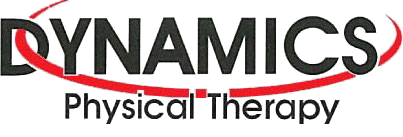 As you age, your body undergoes a series of physiological changes. Loss of strength and muscle mass (sarcopenia) are natural consequences of aging. These changes typically occur gradually and impact your functional abilities and overall quality of life. Maintaining optimal muscle strength and mass is crucial for maintaining your independence and preventing age-related health complications, such as fall-related injuries.
As you age, your body undergoes a series of physiological changes. Loss of strength and muscle mass (sarcopenia) are natural consequences of aging. These changes typically occur gradually and impact your functional abilities and overall quality of life. Maintaining optimal muscle strength and mass is crucial for maintaining your independence and preventing age-related health complications, such as fall-related injuries.
Physical Capacity Changes Through Your Lifespan
Maximum physical capacity occurs between the ages of 20 and 30. Small changes in muscle mass, power, and strength are seen between the ages of 30 and 50, followed by pronounced changes after the age of 50, with more than a 15% loss of strength per decade.
Why Do You Lose Strength and Muscle Mass with Aging?
Researchers have identified two contributing factors to age-related strength and muscle mass loss: muscle quality and neuromuscular innervation. Muscle quality refers to the composition and function of the muscle tissue. As you age, changes occur within the muscle fibers, which affects their ability to generate force. Neuromuscular innervation refers to the communication between the nerves and muscles of the body. As you age, the nerve signals to the muscles become less efficient, leading to decreased strength; think of nerves as the electrical wiring that allows your muscles to turn on and contract.
Consequences of Decreased Strength and Muscle Mass with Aging
The biggest risk factors for loss of strength and muscle mass include increasing age and residing in a long-term care facility. The consequences of decreased strength and muscle mass include:
- The inability to perform normal activities of daily living.
- Frailty and increased fall risk.
- Loss of independent living.
- Social isolation and depression.
- Physical inactivity.
- Increased risk of chronic health conditions, including type 2 diabetes, obesity, heart disease, and osteoporosis.
- Increased risk of all-cause mortality.
The Role of Physical therapy in Managing Age-Related Strength and Muscle Mass Loss
Physical therapy plays a crucial role in managing age-related strength and muscle mass loss. Your physical therapist will take a detailed history and perform a thorough physical exam to design an individualized treatment plan for your needs and goals.
Components of your treatment plan may include:
- Resistance and strengthening exercises – to target certain muscle groups to enhance muscle strength and prevent muscle wasting. These exercises help to increase muscle mass, increase the size of muscle fibers, and increase overall strength.
- Stretching exercises – these exercises help to relieve stiffness and help to maintain joint mobility.
- Functional training – this includes training to perform activities of daily living, such as climbing stairs or getting up off a chair. This type of training helps to improve muscle coordination, balance, and functional ability.
- Balance and coordination exercises – these exercises help to improve proprioception and stability. Balance and coordination exercises help to reduce the risk of falls and associated complications, such as fractures.
- Core Stability/Strength – core stability is a key component for good balance and also helps to maintain/improve lumbar spine strength and reduce the incidence of lumbar spine episodes.
- Pain management modalities – therapies such as ice, heat, ultrasound, and manual therapy can help manage inflammation and pain.
- Nutrition support – adequate nutrition, particularly protein from food sources such as lean chicken, eggs, nuts and seeds, or protein supplements can help maintain muscle mass. Other nutrients that help to support muscle health include antioxidants, omega-3 fatty acids and vitamin D.
- Education – your physical therapist will educate you on maintaining an active lifestyle and also provide guidance on optimal nutrition for managing strength and muscle mass loss.
Your physical therapist can help you manage age-related strength and muscle mass loss through the development of an individualized comprehensive treatment plan that’s based on your needs and goals. Following their recommendations will allow you to manage your symptoms and maintain an optimal quality of life as you age.
References
- Keller K, Engelhardt M. Strength and muscle mass loss with aging process. Age and strength loss. Muscles Ligaments Tendons J. 2014;3(4):346-350. Published 2014 Feb 24.
- Wilkinson DJ, Piasecki M, Atherton PJ. The age-related loss of skeletal muscle mass and function: Measurement and physiology of muscle fibre atrophy and muscle fibre loss in humans. Ageing Research Reviews. 2018;47:123-132. doi:10.1016/j.arr.2018.07.005
- Wilkinson DJ, Piasecki M, Atherton PJ. The age-related loss of skeletal muscle mass and function: Measurement and physiology of muscle fibre atrophy and muscle fibre loss in humans. Ageing Research Reviews. 2018;47:123-132. doi:10.1016/j.arr.2018.07.005
- Volpi E, Nazemi R, Fujita S. Muscle tissue changes with aging. Curr Opin Clin Nutr Metab Care. 2004;7(4):405-410. doi:10.1097/01.mco.0000134362.76653.b2
- Mithal A, Bonjour JP, Boonen S, et al. Impact of nutrition on muscle mass, strength, and performance in older adults. Osteoporos Int. 2013;24(5):1555-1566. doi:10.1007/s00198-012-2236-y
- Oikawa SY, Holloway TM, Phillips SM. The impact of step reduction on muscle health and aging: Protein and exercise as countermeasures. Frontiers in Nutrition. 2019;6. doi: 10.3389/fnut.2019.00075


